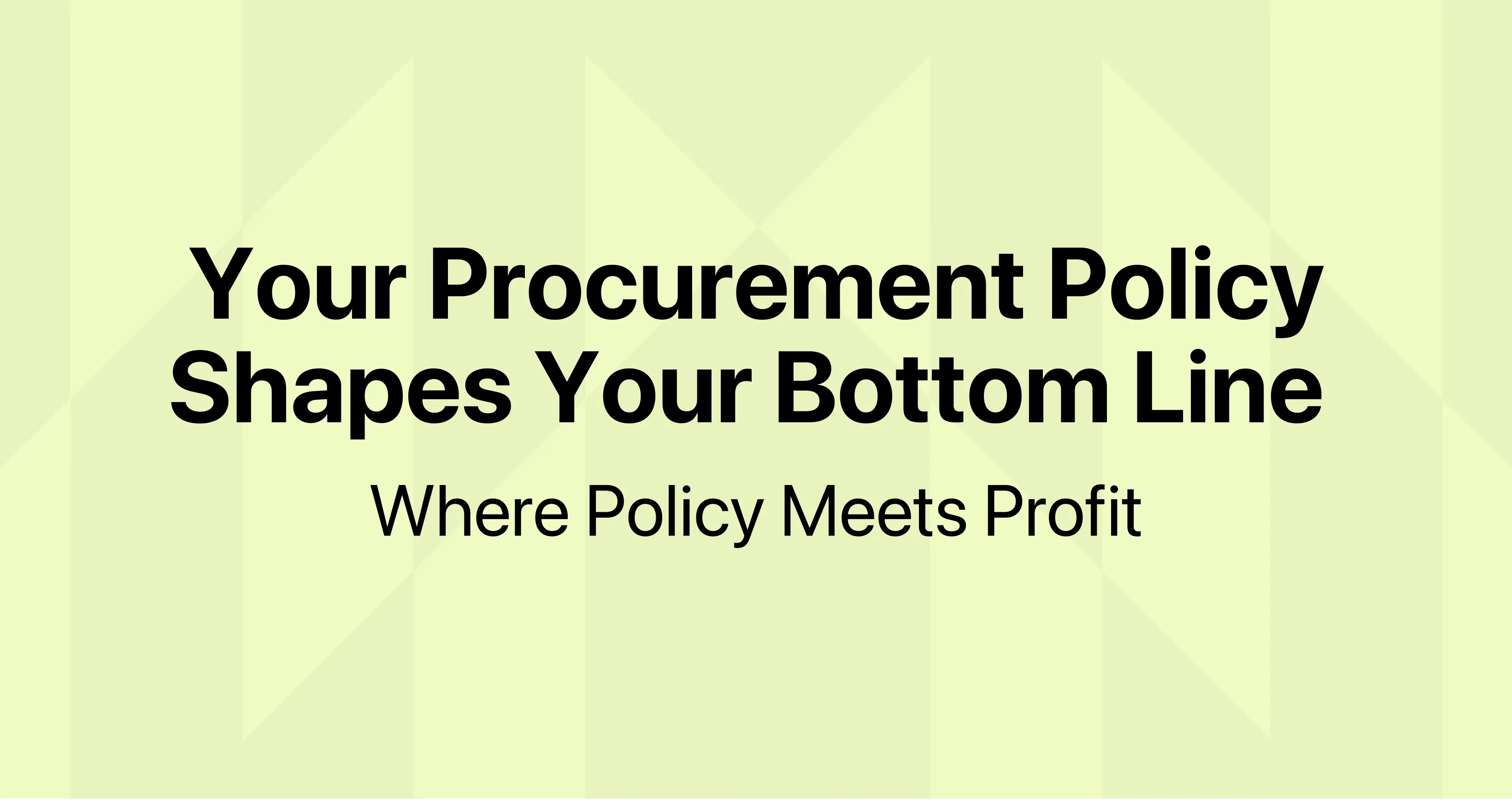How to Scale with Confidence: Tips for finance leaders
Scaling with Confidence
Is confidence earned through maturity? Companies often believe that scaling with confidence is something that comes with maturity, and while that may seem true, it’s a misconception. Why? Players have different stages of maturity that dictate their operational readiness and complexity; however, a common denominator that exists across companies, no matter their stage, is confidence. Within the context of scaling, this refers to the ability to make strategic decisions quickly, rationally, and accurately in a way that uses resources wisely.
Scaling vs Growth: What's the difference?
Though often used interchangeably, scaling and growth are fundamentally different approaches to expanding a business, and understanding this distinction is critical.
- Growth is a linear expansion: revenue increases because you add more resources, such as hiring additional staff, expanding facilities, or increasing marketing spend. This approach usually means costs rise proportionally with revenue, and financial risk can increase as complexity grows. In other words, doing more with more.
- Scaling, by contrast, means generating exponentially more output or revenue without proportionally increasing costs or headcount. In other words, doing more with less.
Confidence plays a different role in each. In growth mode, finance teams must trust that new resources will be effectively utilized and that cost increases won’t erode margins. In scaling mode, confidence comes from having real-time visibility into spend, supplier performance, and operational efficiency, enabling quick, data-driven decisions that fuel sustainable expansion without losing control.
Many companies struggle with this shift because their financial and procurement systems were designed for linear growth management, not scalable agility. This is where a well-defined Procurement Operating Model becomes essential.
Procurement Operating Model:
A procurement operating model defines how an organization manages its procurement activities to align with business goals. It includes the structure, processes, roles, and tools needed for effective sourcing and supplier management.
Three elements that can affect a company’s confidence when it comes to scaling are:
- Weakened financial visibility and control: nothing feels good in the dark.
- Outdated processes: not the best when you’re trying to do more with less.
- Structurally faulty organizational frameworks cause inefficiencies and hinder agility.
What makes for a solid foundation to scale with confidence?
Confidence is rooted in one’s ability to take risks, make commitments, and follow through on their decision-making that will ultimately drive innovation. While cutting costs is an important part of scaling a business, it’s a fallacy to believe that it, in and of itself, is the only lever to do so.
Here are three pillars that form that foundation, and how procurement plays a critical role in each (beyond just cost savings):
1. A solid team of A players: High-growth companies need teams that can make operational decisions quickly, but without compromising financial control. The key isn’t tighter oversight, it’s smarter visibility.
Procurement’s role: Teams move faster when they have clarity and trust in the system. Procurement creates that clarity, enabling speed without sacrificing control.
2. Processes that increase efficiency using automation: Manual workflows slow down decision-making and introduce risk. Automation isn’t just about speed; it’s about consistency, accuracy, and freeing up time for strategic thinking.
Procurement’s role: By automating procurement cycles, approvals, and audit trails, procurement helps reduce cycle time and rework. That improves operational velocity, reduces errors, and allows finance to close books faster and forecast more accurately.
3. Tech: Scaling isn’t linear, and it requires frequent course corrections. But most companies operate with backward-looking data. Finance needs forward-looking visibility into spend, suppliers, and performance metrics in real time, not after the quarter ends.Procurement’s role: Modern procurement tools give finance real-time visibility into spend, commitments, and vendor performance, enabling better planning, earlier risk detection, and smarter, proactive decisions.
How to build a solid foundation
To scale effectively and with confidence, companies often undergo transformations. According to McKinsey, 340,000 transformation initiatives represented approximately $200 billion; that’s a lot, right (McKinsey 2025)? Of the total financial impact of a transformation, procurement represented more than 20%.
- Assess Internal Capabilities First: Begin with a thorough evaluation of your current procurement processes, spend data, supplier relationships, and internal workflows. Understanding your baseline is essential to identify efficiency gaps and agility blockers before scaling.
- Adopt Scalable Technology: Moving beyond spreadsheets and legacy systems is imperative. Modern procurement platforms automate routine tasks such as supplier onboarding, catalog management, and spend tracking while providing real-time visibility. This digital enablement supports agility, reduces errors, and drives faster, smarter decision-making that can flex as you grow.
- Think Beyond Quick Wins: While cost-cutting remains important, confident scaling demands a long-term perspective. Choosing the right partners, tools, and strategies that will remain effective over the next several years ensures sustainable growth rather than temporary fixes.
- Build Transparency and Visibility: You cannot manage what you cannot see. Effective procurement creates clarity around who you purchase from, what you’re spending, and where risks or opportunities lie. Real-time insights into commitments and supplier performance empower leadership to act decisively and confidently in an evolving environment.
- Invest in Skills and Operating Models: Successful scaling requires adapting procurement operating models to prioritize strategic value over transactional tasks. Embracing data-driven decision-making and aligning procurement closely with your business goals are proven enablers of transformation success.
The critical link between growth metrics and scaling success
Now that you understand what scaling with confidence entails, the next question is: how do you measure it? A key starting point is tracking growth first. Although growth and scaling are different, knowing your growth metrics is essential because they reveal how quickly your business is expanding and where demand is headed.
This insight lays the groundwork for informed scaling decisions, ensuring you scale efficiently and sustainably. Below, you'll find the key metrics for scaling, alongside the essential procurement measures you should be monitoring.
Four growth metrics you need to track:
- Growth rate
- CAC
- Retention
- Cash flow
Four procurement metrics to help yo scale:
- Spend under management
- Procurement ROI
- Cost savings and cost avoidance
- Procurement cycle time
How these metrics work together to support scaling
- Growth metrics give a high-level view of market performance and customer dynamics, helping businesses assess whether their expansion is healthy, cost-effective, and sustainable.
- Procurement metrics provide granular insights into operational efficiency, cost control, risk management, and supplier relationships, all essential for scaling without losing financial control or agility.
Final thoughts
Scaling with confidence can feel complex, especially during financial uncertainties, process limitations, and supplier challenges. Yet, building a strong procurement foundation, one grounded in clear financial visibility, efficient workflows, and aligned teams, transforms scaling from a risky leap into a deliberate, manageable journey. Finance leaders who focus on clarity and control empower their organizations to navigate growth with agility and precision.
Understanding the challenges and opportunities inherent in scaling is the first step toward smarter decision-making and sustainable expansion.
.svg)





